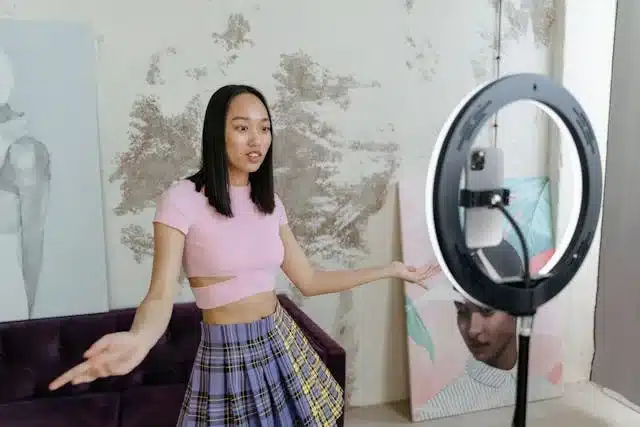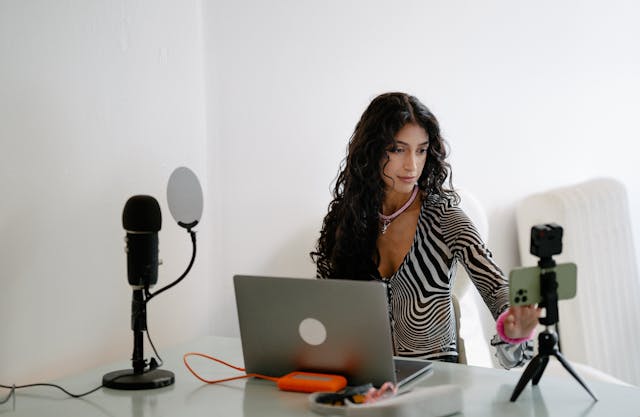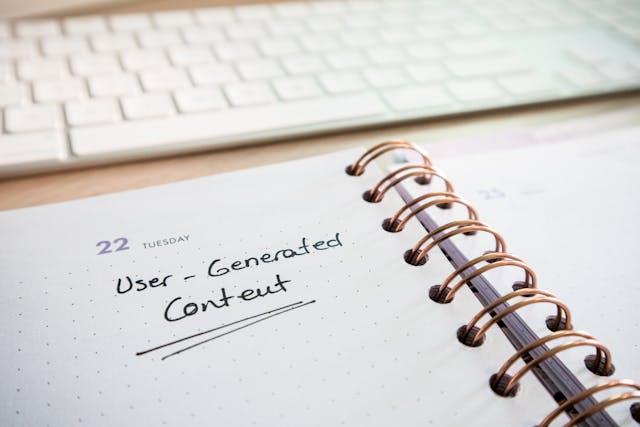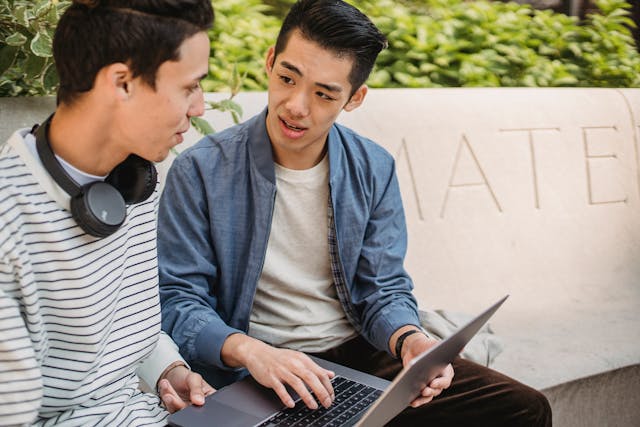Infringement of copyright on social media is an issue many creatives face today. While platforms like…
Instagram, TikTok, and YouTube offer incredible exposure, they also present serious risks when it comes to unauthorized use of original content.
From uncredited reposts to stolen videos, the digital space is full of copyright violations that can harm your brand and creative rights.
Social media is a double-edged sword for artists. On one hand, it’s an incredible platform to showcase your work. It helps build a community and connect with potential clients.
On the other hand, it’s packed with copyright infringement. Your creations can be easily copied, shared, and misused without your permission.
Therefore, understanding the nuances of copyright infringement in the social media landscape is necessary. It will aid you in protecting your artistic property.
We’ll see real-life examples of copyright infringement and I will offer insights and actionable steps to help you safeguard your work and navigate the often murky waters of online copyright law.
Understanding Copyright Infringement: A Quick Recap
Before we delve into specific examples, let’s quickly recap what copyright infringement entails.
Copyright infringement occurs when someone uses your copyrighted work without your permission.
It involves violating your exclusive rights to reproduce, distribute, display, or create derivative works.
Essentially, it’s theft of your intellectual property, and it can have significant financial and reputational consequences.
This is not just a legal issue, it’s a matter of preserving your identity as an artist and protecting the blood, sweat, and tears you pour into your creations.
Now, while copyright protection is automatic upon creation, proving infringement and seeking legal remedies often requires registering your work with the U.S. Copyright Office.
For instance, platforms like YouTube and Instagram have established reporting systems for copyright violations.
Moreover, it’s important to note that social media platforms have their own terms of service regarding copyright, which artists should be familiar with.
Real-Life Examples of Copyright Infringement on Social Media
To better illustrate the issue, let’s examine some real-life cases of copyright infringement that have played out on social media:
1. The Taylor Swift and Ally Burguieres Case
One notable example involves illustrator Ally Burguieres, who discovered that one of her illustrations had been copied and posted on Taylor Swift’s social media accounts.
Specifically, a fan had copied Burguieres’ print and signed their own name to it and Swift then shared a snapshot of the fan’s post to promote her 1989 tour.
Although Swift’s team removed the infringing work and offered a four-figure compensation (with the stipulation that it be donated to charity), Burguieres refused, as her primary request, proper credit for her work, was not met.
Ultimately, the case highlights the importance of attribution and the challenges artists face when their work is easily reposted and shared across multiple social media accounts. As Burguieres herself stated…
“It shouldn’t be that difficult to give credit”.
2. Jonas Jödicke vs. Aaron Carter
Another instance involves artist Jonas Jödicke, who confronted musician Aaron Carter on Twitter over Carter’s alleged unauthorized use of his artwork. Jödicke, a lesser-known artist, accused Carter of using his work to promote merchandise.
Although Carter dismissed the issue, the case underscores the power dynamics at play when a more famous artist allegedly infringes on the work of a lesser-known one.
Moreover, this situation illustrates how social media can be both a tool for copyright policing and a platform where infringement can easily occur.
3. Street Art and Social Media Influencers
Interestingly, even street art is subject to copyright protection, a fact that social media influencers should be aware of.
As the U.S. Court of Appeals for the Second Circuit has confirmed, street art is protected by copyright law.
Therefore, social media influencers who incorporate street art into their sponsored posts without permission could face legal claims.
This is especially important in today’s creator economy, where visual content drives brand deals and partnerships. Particularly it’s relevant as the social influencer industry grows and becomes more lucrative.
4. Marriott International and Sony Music Entertainment
Brands, not just individual artists, can also be victims, or perpetrators, of copyright infringement.
Sony Music Entertainment filed a lawsuit against Marriott International, accusing the hotel company of “willful infringement” by using copyrighted music in their social media posts without securing the right to do so.
The lawsuit identified over 900 infringements of Sony’s sound recordings, including works by Beyoncé, Michael Jackson, and Miley Cyrus.
Therefore, it is important to take away, that companies of all sizes should be wary of using popular music in their social posts and videos without securing the appropriate licenses.
5. Shepard Fairey’s “Hope” Poster
Before social media, copyright infringement existed. One example is the case of Shepard Fairey and his “Hope” poster of President Barack Obama.
Fairey created the poster using an AP photograph without permission or proper credit and, consequently, the AP sued him for copyright infringement.
Although the case was settled out of court, it serves as a reminder of the importance of obtaining permission and properly crediting original sources when creating artwork.
6. Vanilla Ice and “Ice Ice Baby”
Also predating social media, is Vanilla Ice’s song, “Ice Ice Baby“, which sampled the bassline from David Bowie and Queen’s “Under Pressure” without permission or credit.
Bowie and Queen filed a lawsuit, and Vanilla Ice eventually admitted to sampling the original work and added credit for Bowie and Queen on the track.
This case underscores, the importance of clearing samples and obtaining proper licenses when incorporating existing works into your own creations.
7. AI and Copyright Infringement
As AI becomes more integrated into the artistic process, it also brings new considerations.
A class action complaint was filed against Stability AI Ltd., Midjourney, Inc., and DeviantArt, Inc.
They alleged that their works were used without permission as input materials to train and develop AI image generators.
This is because, the defendants’ AI machines generate images…
“in the style’ of a particular artist are already sold on the internet, siphoning commissions from the artists themselves”.
With advancement in AI, artists should stay informed through resources like this analysis from the Electronic Frontier Foundation on AI and copyright.
Protecting Your Work: Actionable Steps for Artists
Given these real-life examples, what can artists do to protect their work on social media?
Here are some actionable steps:
1. Register Your Copyright: While copyright protection is automatic, registering your work with the U.S. Copyright Office provides additional legal benefits.
2. Monitor Your Online Presence: Regularly search for unauthorized uses of your artwork using tools like Google Reverse Image Search. Set up Google Alerts for your name and the titles of your works.
3. Use Watermarks: Apply watermarks to your digital images before posting them on social media. Make sure the watermark is visible but doesn’t detract from the artwork itself.
4. Educate Your Audience: Clearly state your copyright policy on your website and social media profiles. Let your followers know how they can share your work appropriately (e.g., with proper credit and a link back to your site).
5. Take Action When You Find Infringement: If you discover unauthorized use of your work, take swift action.
This might include sending a cease-and-desist letter, contacting the social media platform to request removal of the infringing content, or, in more serious cases, pursuing legal action.
6. Utilize Social Media Copyright Tools:
Familiarize yourself with the copyright reporting tools available on each social media platform. Use these tools to report any suspected copyright infringement.
For Instagram users, consider registering your content under their Rights Manager, which helps creators manage and protect their content more proactively.
Copyright infringement on social media is a pervasive issue that artists must contend with.
However, by understanding the nuances of copyright law, staying informed about real-life examples of infringement, and taking proactive steps to protect your work, you can navigate the social media landscape with greater confidence.
Ultimately, remember that protecting your artistic property is an ongoing process that requires…
Vigilance, education, and a willingness to take action when necessary. And by doing so, you ensure that your creativity is both shared and respected in the digital age.
READ ALSO:
Copyright Laws for Artists Online for Protection
International Copyright Laws: What Artists Must Know
Copyright Audit Strategies for Artists: Conducts for Online Presence



